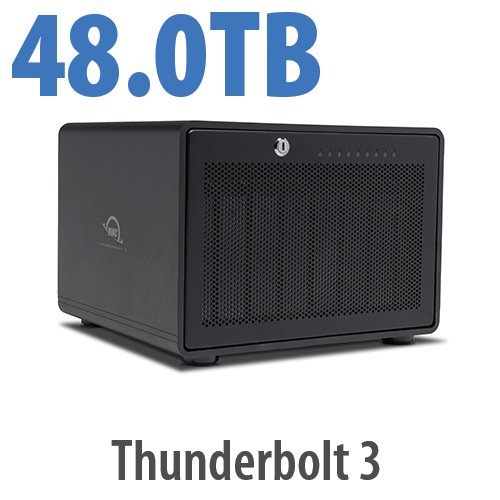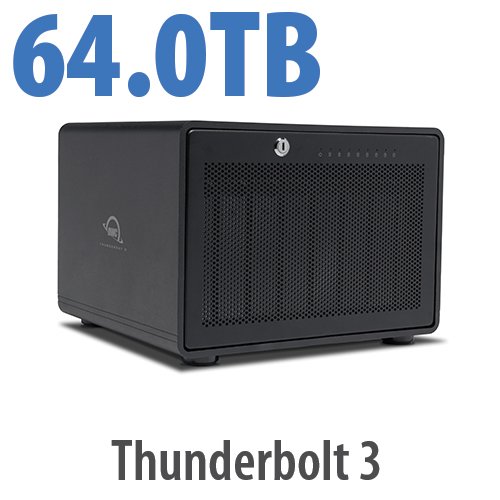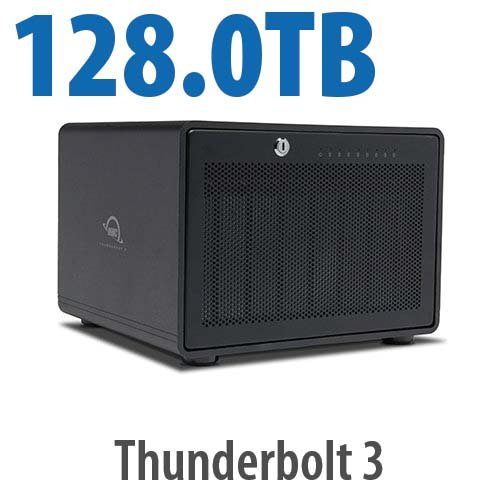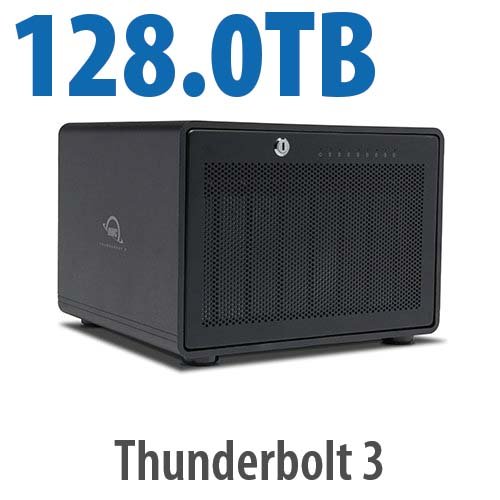
$220 SAVE $130 = 37.0% Western Digital 16.0TB Western Digital Ultrastar DC HC550 3.5-in… in Storage: Hard Drives
|

|

|

|

|

|

|

|

|

|
OWC ThunderBay 8: Speed vs Transfer size, RAID-0 vs RAID-5
Related: 4K and 5K display, 6K display, computer display, hard drive, Other World Computing, OWC Thunderbay, OWC ThunderBay 8, RAID, RAID-0, RAID-5, SoftRAID, storage, Thunderbolt, Thunderbolt 3, weather events
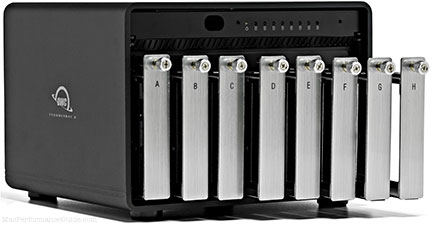
Configurations up to 128TB (8 X 16TB). Larger capacities might become available later in 2020. Various drive choices available including standard and enterprise drives. Includes SoftRAID Lite or SoftRAID XT, which can also be used in non-RAID configuration.
MPG tested the 48TB OWC ThunderBay 8 with eight Toshiba MD04ACA 6TB hard drives (128MB cache per drive), using the full version of SoftRAID 5.8.3.
This page evaluates RAID-0 vs RAID-5 performance of the OWC ThunderBay 8 across the fastest part of the volume using different transfer sizes.
Test results, RAID-0 vs RAID-5 speed vs transfer size
Test mule was the 2019 iMac 5K. The run-sequential-suite command of diglloydTools Disktester was used.
disktester run-sequential-suite --iterations 5 --test-size 4GB
Speed always varies with transfer size, whether on hard drives or SSDs. There is always overhead e.g., writing 1MB as thirty-two 32K transfers is far less efficient than writing 1MB as a single transfer). With RAID-0 and RAID-5, the striping aspect means that the transfer is split into blocks across drives, the “stripe size” being the determinant of how the transfer is split up.
With 32K and 64K transfers, RAID-5 actually outperforms RAID-0 here, presumably because its 16K stripe size means that a 32K block is split into two writes onto two drives, a 64K block split into 4 writes onto 4 drives whereas RAID-0 with a stripe size of 64K means 16/32/64K transfers involve only a single drive.
At 128K transfers, RAID-0 and RAID-5 are about the same. At 256K and larger writes, RAID-5 lags considerably, presumably due to the delay for parity calculations. For reads, RAID-5 is nearly as fast as RAID-0 until peak speeds are reached (no parity calculations are needed for reads, and RAID-5 is effectively a 7-drive stripe for reads, versus an 8-drive stripe for RAID-0).
RAID-5 offers outstanding performance for reads, and very good performance for writes. Since reads are generally far more common, the practical implication is that RAID-5 performance in the OWC Thunderbay 8 is outstanding for most all uses with the benefit of fault tolerance. The speed difference vs RAID-0 will be of nil consequene with most all applications. Besides, running an 8-drive RAID-0 stripe is unwise, due to the risk of losing the entire volume from a drive failure.
Vertical scale is MB/sec. Horizontal scale shows transfer size. RAID-0 used 64K stripe size; RAID-5 uses 16K stripe size (default, not configurable).
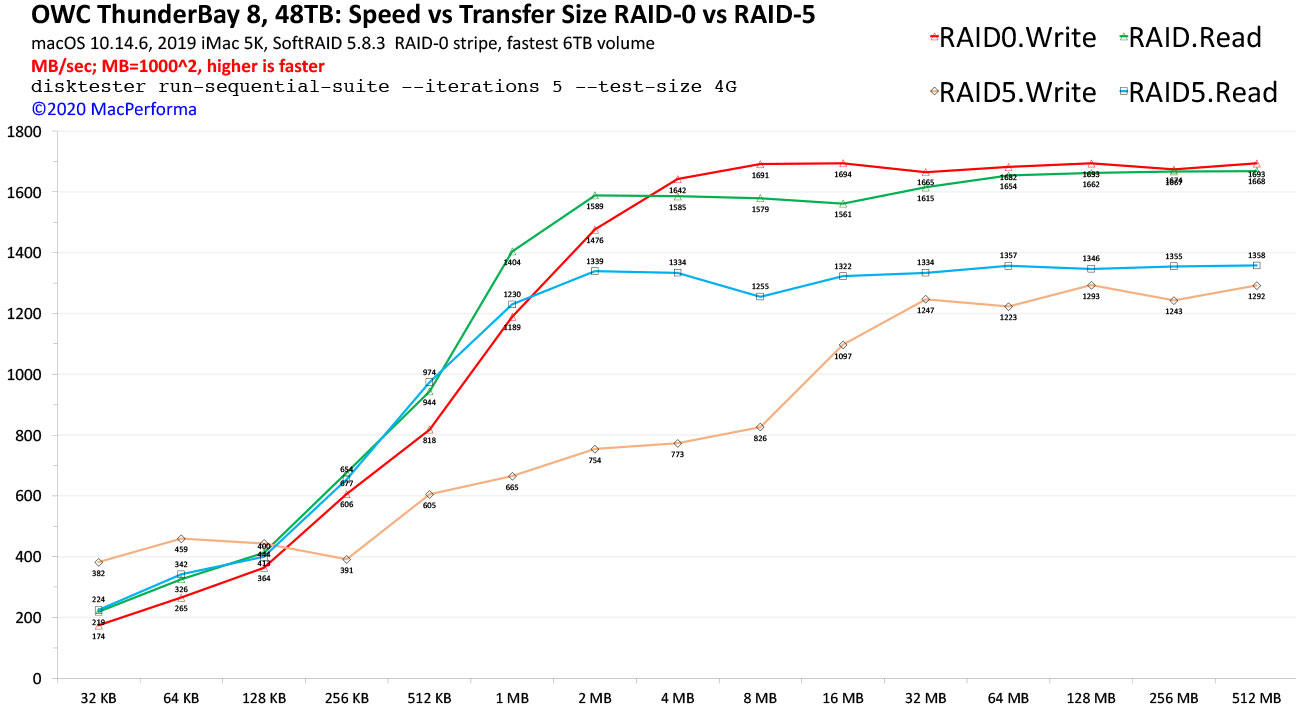
Seagate 22TB IronWolf Pro 7200 rpm SATA III 3.5" Internal NAS HDD (CMR)
SAVE $100

 diglloydTools™
diglloydTools™

